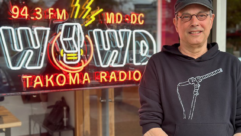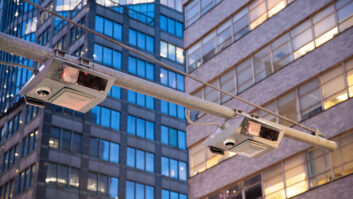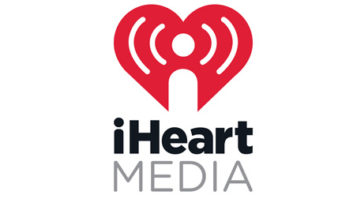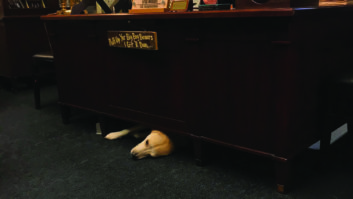
The writer is president of the Southern California Broadcasters Association.
A Dec. 6 press release picked up by the trades from the Multicultural Media, Telecom and Internet Council to President-elect Donald Trump about “Decommissioning AM Radio” is a grossly inaccurate version of the state of AM radio that is not supported by the facts of AM radio listenership today in Southern California, and the rest of the country as well.
AM radio is NOT dead, it’s growing! Indeed, the facts prove that AM radio remains a constant companion and close friend to millions of L.A. metro area fans of general market news, news/talk, Spanish news, Spanish news/talk, sports, and the quietly growing, but rarely talked about, multicultural audiences. In brief, much like a changing America, the audience and ethnic background of AM radio listenership is ever-evolving, and fortunately for AM radio, perfectly positioned for more growth.
Let’s begin with a few solid facts about AM radio in the L.A. metro area alone, the largest radio revenue market in the United States, and home to over 10 million people in Los Angeles County, also, the largest populated county in the U.S.

- From first quarter 2015 through third quarter 2016, the 19 AM radio stations that offer original programming here in the L.A. metro area, have shown an increase in listenership, up 3.8%
- In First Quarter 2015, AM radios’ weekly cume listenership was 2,816,800 persons 12+
- By Third Quarter 2016, that same listenership stood at 2,922,700, an increase of 105,900 listeners
- Q1 2015 vs. Q3 2016 up 3.8%
- Increase of 105,900 listeners
Source: Nielsen, Q1 2015–Q3 2016, Persons 12+, Monday–Sunday, 6 a.m.–mid., 19 AM radio stations.
The above data is solid listener growth for AM radio, pure and simple.
We would have urged the MMTC to dig a little deeper and have the facts before writing to Mr. Trump about AM radio, If they had, our interests would have been aligned on the sweeping ethnic and demographic changes happening now in America and how AM radio will directly benefit from those changes, as it has for the past 100 years.
Let’s talk about today’s dynamic AM radio audience …
In Southern California, over 42% of the population is now Hispanic. (Source: Census, 2010–2014 American Community Survey, five-year estimates). That’s nearly 9 million people and growing. Any wonder why 15 of the 100 AM radio stations in Southern California offer Spanish programming? (Source: Wikipedia, So Cal AM stations by format)
In Southern California, 13% of the population is now Asian. (Source: Census, 2010–2014 American Community Survey, 5-year estimates)
That’s over 2.6 million people and growing.
In Southern California, there are eight Asian AM radio stations programming in five different dialects to over 2.6 million Asian-Americans, all on the AM dial!
The aging demographics are a reality all over the country with U.S. birthrates at its lowest since World War II, and yet, the L.A. metro area has 12% of the population 65 years old and up. (Source: Census, 2010–2014 American Community Survey, five-year estimates). Yes, older people listen to AM radio and yes, as a demographic, this generation of 55+ citizens has more disposable income than any previous generation … ever!
Does anyone in 2016 really think this burgeoning group of American citizens listens only to FM radio? In this mega-city and region, with our enormous traffic conditions, multiple languages, and this much diversity of culture, heritage and interests?
And now let’s look at the rich heritage and adaptability of AM radio.
AM radio has reinvented itself time and time again for a changing America over 10 decades. AM radio began almost 100 years ago with radio soap operas, Big Band concerts from major ballrooms all over the country, then added comedy, and in times of national crisis, our nation turned to AM radio to hear FDR who proclaimed on-air, “We have nothing to fear but fear itself,” calming a nervous nation during the depression. His “Fireside Chats,” heard only on AM radio, convinced a weary nation that a “New Deal” was coming.
Since then, AM radio introduced play by play sports coverage, weather reports, farm and futures reports, which were critical for the agricultural economy we thrived on back then, and also launched the careers of radio’s brightest stars with each decade ushering in a new level of audience appeal.
Just as AM radio evolved out of top 40 back in the 1960s, it has morphed into new formats and found an entirely new audience to appeal to. Please keep the following in mind when you consider the “death” of AM radio:
- The explosion of sports talk formats happened only on AM radio
- The creation and proliferation of all-talk formats happened only on AM radio
- All surveys on the subject indicate that people listen to AM radio as a primary source for breaking news, sports, and the stock market (Source: Borrell Associates)
- The most successful syndicated talk shows in the country can mostly be heard on AM radio (Source: Arbitron, RADAR Network)
- Many AM radio news/talk formats can be heard in over 10 states, thanks to AM modulation that travels over mountains and booms 50,000 watt transmissions from 6 p.m. to 5 a.m. every day
- Religious spoken word programming of all kinds is heard mostly on AM radio
- The all-business formats began and can only be heard on AM radio
- All mass appeal car manufacturers continue to offer AM radio in their new models with NO plans to change the AM/FM radio offering (Source: Press releases and quotes from GM, Ford, Honda, Toyota, February–May, 2014)
As it has demonstrated for 100 years, AM Radio survives and thrives because it changes with its audience and all the while, inventing and reinventing new formats and programming for an ever changing America.
Get ready for more innovation from AM radio that will excite, inform, and entertain millions of new listeners and new generations of AM radio fans to come.
AM radio … growing and evolving, just like America.
Comment on this or any story to [email protected].












